Iceland is full of glacial rivers that produce countless spectacular waterfalls. Some pour out of cliff faces as you round the next bend on Route 1, Iceland’s Ring Road. Others can only be reached by a hike. Some are famous; others don’t even have names. And while Iceland waterfalls literally number in the thousands, here’s some spectacular Iceland waterfalls that simply should be on your must see list when visiting Iceland.
How to get around Iceland
Getting around to check out the waterfalls is fairly easy, with stops at many of Iceland’s most famous waterfalls available on tours. But we think the best way to explore Iceland is driving the country yourself.
A car rental in Iceland gives visitors the most freedom to explore, and leaves you plenty of time to get off the beaten path. For most of the must-see waterfalls in Iceland, you’ll hit the Ring Road or the Golden Circle, and there are a ton of other attractions along the way you won’t want to miss.
Driving in Iceland is fairly easy too, with most of the roads both well maintained and well-marked. And there’s plenty of unique places to stay along a road trip around Iceland.

Skógafoss
Located about 28 kilometers east of Seljalandsfoss, Skógafoss spills over the cliffs of the former coastline. Skógafoss is one of Iceland’s biggest waterfalls with a width of 25 meters (82 feet) and a drop of 60 meters (200 feet).
And of course, there is a legend. The first Viking settler in the area, Þrasi Þórólfsson, buried a treasure chest filled with gold coins in a cave behind Skógafoss. On days when the sun is shining, it is said that his gold can be seen glittering through the water. Many have tried to find the chest and once a young, local boy succeeded. He tied a rope to the chest’s ring and pulled. He was only able to retrieve the ring and the rest of the chest disappeared. The ring was later used for the church door at Skógar.
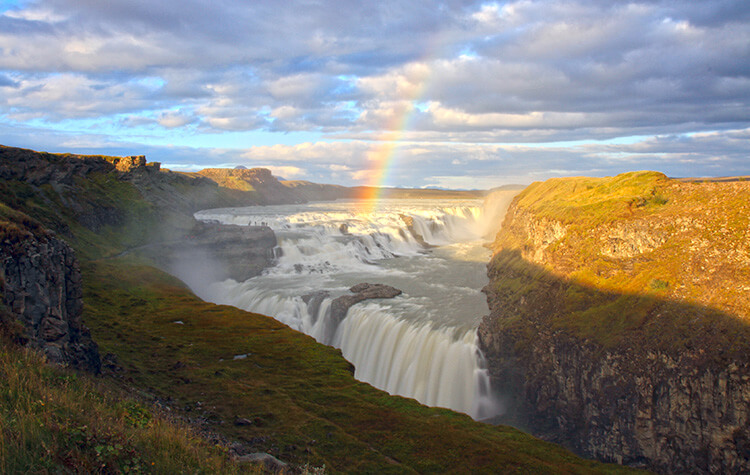
Gullfoss
Gullfoss can be found on The Golden Circle, the 190 mile (300 kilometer) circular route from Reykjavik and back which encompasses many of Iceland’s most famous landmarks. With a 105-foot double-cascade and dozens of rainbows streaking across the misty skies on a sunny day, it’s no wonder Gullfoss is Iceland’s most popular waterfall.
And while you’re at Gullfoss, you won’t want to miss also visiting the nearby Thingvellir National Park, which offers interesting rocky scenery, ridges, and lakes. You can even snorkel at Silfra in Thingvellir, where you can snorkel between two continental plates while marveling at the otherworldly underwater world.
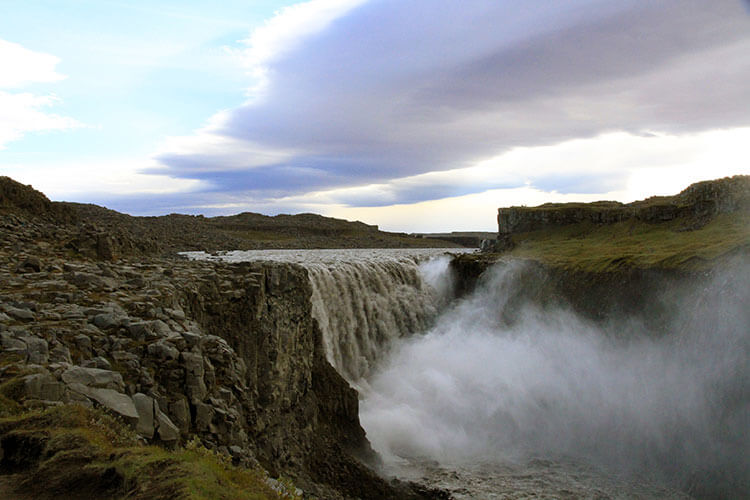
Dettifoss
To the northeast in Vatnajökull National Park, you’ll find the Dettifoss waterfall. It’s one of the most powerful waterfalls in Europe and has a total height of 45 meters.
Though not the easiest Iceland waterfall to reach, it is still a really popular attraction of the Diamond Circle. This is known as Iceland’s High North, and you won’t want to miss Ásbyrgi Canyon, whale watching in Húsavík, and exploring Lake Mývatn while road tripping the Diamond Circle.
You can technically reach Dettifoss from Reykjavik in around a 6 hour drive, but ideally, spend a few days exploring North Iceland.
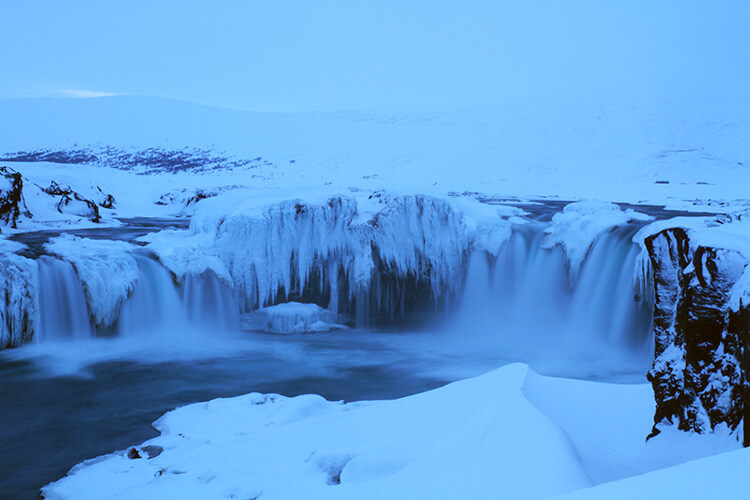
Goðafoss
Located about 50km east of Akureyri in the North, Iceland’s most historic waterfall has been mesmerizing visitors for centuries. And no trip to North Iceland is complete without marveling at Godafoss.
Of course it also has a legend, like so many other things in Iceland. As the story goes, in the year 1000 a local chieftain Þorgeir Ljósvetningagoði decided that Icelanders should adopt Christianity. He threw all of his statues of Pagan gods into the waterfall and the waterfall was appropriately named Goðafoss, which translates to the waterfall of the gods.
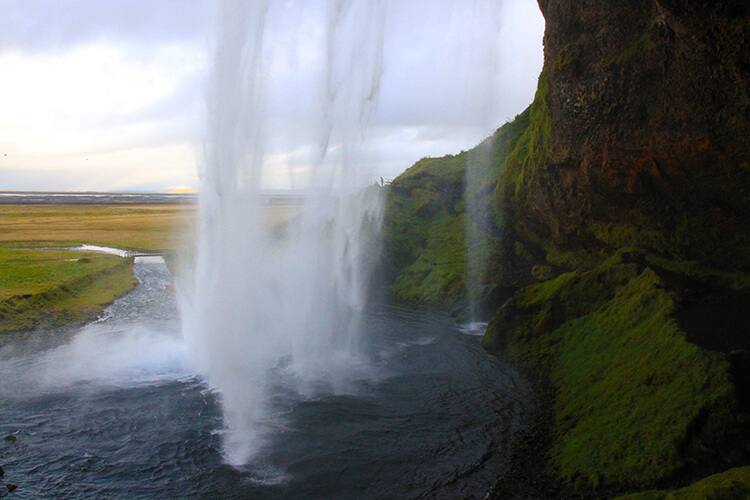
Seljalandsfoss
There are many taller and more powerful waterfalls in Iceland, but the special thing about Seljalandsfoss is that you can walk behind it. Dropping 60 meters, Seljalandsfoss is easily spotted from Route 1 on the way from Reykjavik to Vik and is a popular tourist attraction with tour buses regularly stopping off at the waterfall.
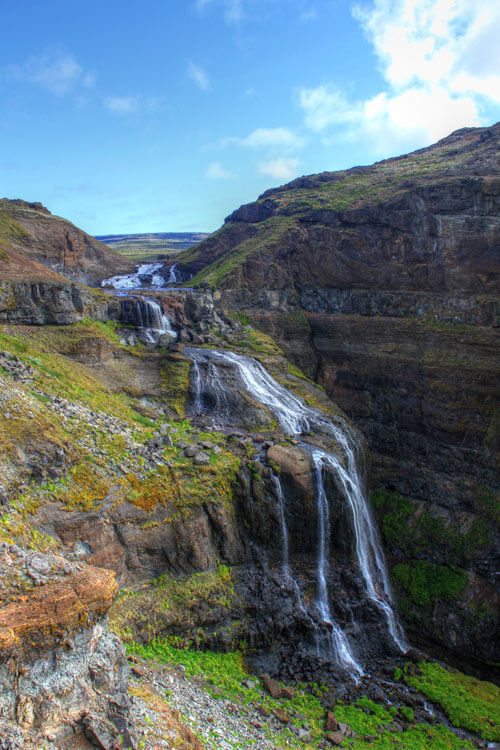
Glymur
Our favorite waterfall, perhaps because it isn’t easy to reach like all the others on this list, is Glymur. Iceland’s highest waterfall cascades 196 meters down the deep gorge of the Botnsdalur valley.
To see this stunning waterfall, you’ll have to lace up your hiking boots, though the hike to Glymur isn’t for the faint of heart. The hike climbs steeply up one side and crosses over (you’ll likely need to wade through) the icy waters of the Botnsá River. But the views over the crowd-free waterfall are well worth the climb to get there.
